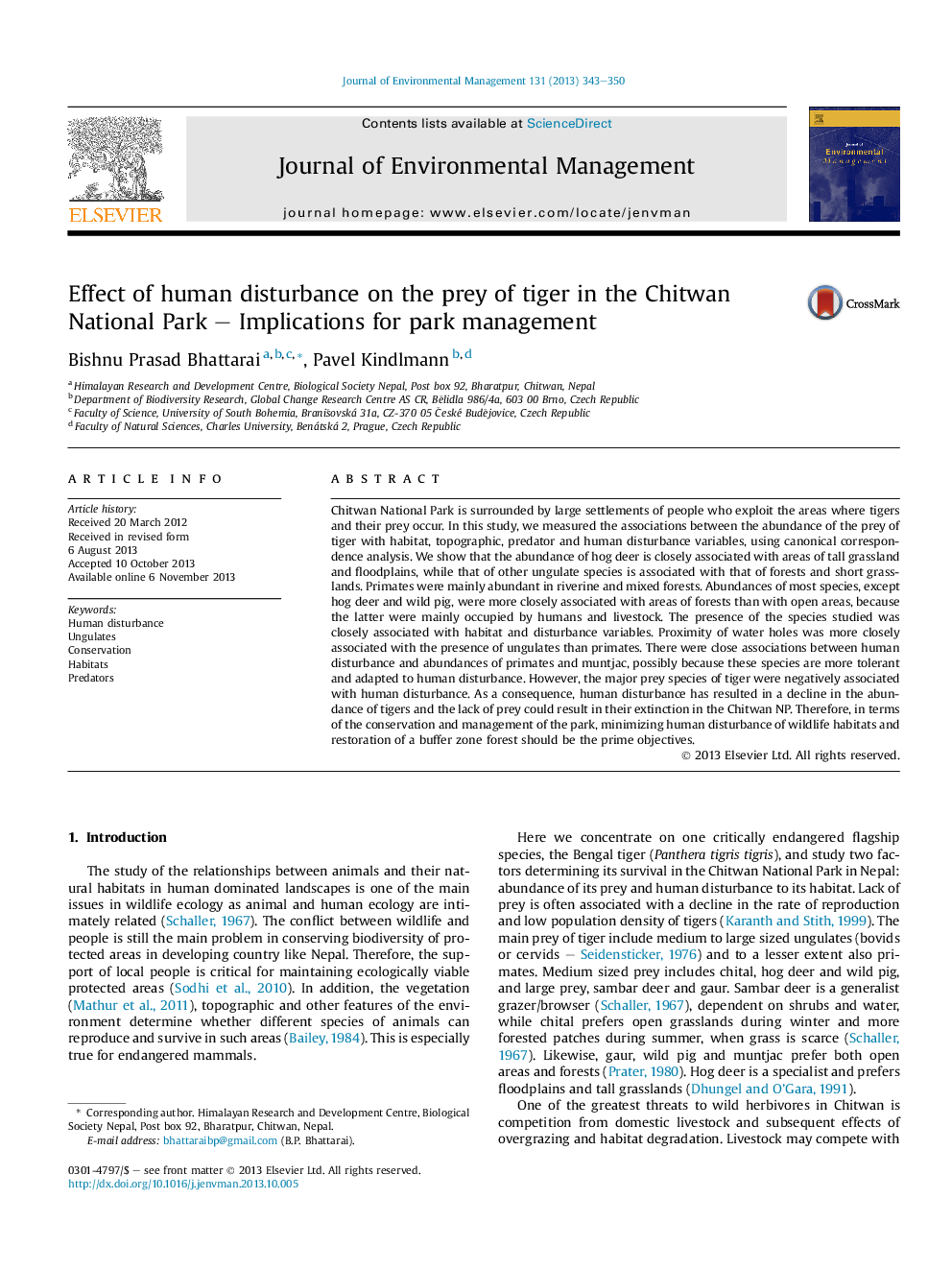| Article ID | Journal | Published Year | Pages | File Type |
|---|---|---|---|---|
| 1055962 | Journal of Environmental Management | 2013 | 8 Pages |
•Effects of human disturbance on the prey of tigers were studied in the Chitwan NP.•The distribution of the prey of tigers is strongly affected by human disturbance.•Despite conservation measures the core area of the Chitwan NP is disturbed.•Human disturbance will be reduced by conserving forests in the buffer zone.
Chitwan National Park is surrounded by large settlements of people who exploit the areas where tigers and their prey occur. In this study, we measured the associations between the abundance of the prey of tiger with habitat, topographic, predator and human disturbance variables, using canonical correspondence analysis. We show that the abundance of hog deer is closely associated with areas of tall grassland and floodplains, while that of other ungulate species is associated with that of forests and short grasslands. Primates were mainly abundant in riverine and mixed forests. Abundances of most species, except hog deer and wild pig, were more closely associated with areas of forests than with open areas, because the latter were mainly occupied by humans and livestock. The presence of the species studied was closely associated with habitat and disturbance variables. Proximity of water holes was more closely associated with the presence of ungulates than primates. There were close associations between human disturbance and abundances of primates and muntjac, possibly because these species are more tolerant and adapted to human disturbance. However, the major prey species of tiger were negatively associated with human disturbance. As a consequence, human disturbance has resulted in a decline in the abundance of tigers and the lack of prey could result in their extinction in the Chitwan NP. Therefore, in terms of the conservation and management of the park, minimizing human disturbance of wildlife habitats and restoration of a buffer zone forest should be the prime objectives.
